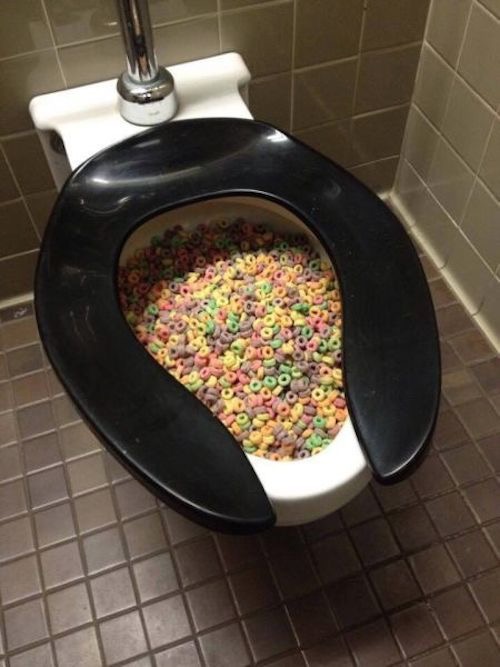Is it Suitable to Dispose of Food Down the Toilet?
Is it Suitable to Dispose of Food Down the Toilet?
Blog Article
Nearly everybody has got their private idea involving Think Twice Before Flushing Food Down Your Toilet.

Introduction
Lots of people are frequently faced with the predicament of what to do with food waste, specifically when it involves leftovers or scraps. One usual question that occurs is whether it's fine to flush food down the bathroom. In this write-up, we'll explore the reasons why individuals may take into consideration flushing food, the consequences of doing so, and alternate techniques for correct disposal.
Reasons why individuals might take into consideration purging food
Lack of recognition
Some people may not know the possible injury caused by flushing food down the bathroom. They may erroneously believe that it's a harmless practice.
Benefit
Flushing food down the bathroom may appear like a quick and simple option to disposing of undesirable scraps, especially when there's no close-by trash can offered.
Laziness
In many cases, individuals might merely select to flush food out of sheer idleness, without considering the effects of their actions.
Effects of flushing food down the bathroom
Ecological impact
Food waste that ends up in rivers can add to pollution and damage marine ecological communities. Furthermore, the water utilized to purge food can stress water sources.
Plumbing problems
Flushing food can cause clogged up pipelines and drains pipes, triggering expensive plumbing repair services and aggravations.
Sorts of food that need to not be flushed
Coarse foods
Foods with fibrous textures such as celery or corn husks can obtain tangled in pipes and cause obstructions.
Starchy foods
Starchy foods like pasta and rice can take in water and swell, bring about blockages in pipelines.
Oils and fats
Greasy foods like bacon or food preparation oils should never ever be purged down the toilet as they can strengthen and cause blockages.
Correct disposal methods for food waste
Making use of a garbage disposal
For homes equipped with waste disposal unit, food scraps can be ground up and purged with the pipes system. However, not all foods are suitable for disposal in this manner.
Recycling
Particular food product packaging materials can be reused, lowering waste and reducing environmental influence.
Composting
Composting is a green means to take care of food waste. Organic products can be composted and made use of to improve soil for horticulture.
The relevance of correct waste administration
Lowering environmental damage
Proper waste monitoring techniques, such as composting and recycling, assistance minimize pollution and protect natural resources for future generations.
Protecting plumbing systems
By staying clear of the method of flushing food down the commode, house owners can avoid expensive pipes repairs and preserve the stability of their plumbing systems.
Final thought
In conclusion, while it may be tempting to purge food down the toilet for benefit, it is necessary to understand the prospective repercussions of this activity. By taking on correct waste monitoring methods and throwing away food waste properly, people can contribute to much healthier plumbing systems and a cleaner atmosphere for all.
FLUSH FOOD DOWN THE TOILET?
FLUSHING FOOD CAN CAUSE BLOCKED DRAINS IN YOUR HOME
All of the plumbing fixtures in your home are connected to the same sewer pipe outside of your home. This outdoor sewer pipe is responsible for transporting all the wastewater from your home to the Council sewer mains. Even small pieces of food that go down the kitchen sink can cause problems for your sewer. It should therefore be obvious that flushing larger bits of food, such as meat, risks a clog in either the toilet itself or the sewer pipes. Flushing greasy food is even more problematic because oil coagulates when it cools, coating the interior lining of your pipes.
THE TOILET IS NOT A BIN
Food isn’t the only thing that people shouldn’t be flushing down the toilet. People use the toilet to dispose of all kinds of things such as tampons, makeup wipes, dental floss, kitty litter and even underwear. Water goes to great lengths to educate residents about the high costs and stress placed on wastewater treatment systems simply from people flushing the wrong stuff down the toilet. It costs taxpayers millions of dollars each year, and homeowners thousands in blocked drain repairs.
FLUSHING FOOD IS A WASTE OF WATER
Flushing food is a waste of our most precious resource - water. In June this year Level 1 water restrictions were introduced to protect water supply from drought conditions. Much of New South Wales continues to be affected by prolonged drought with recent figures revealing up to 97 per cent of the state remains in drought. Depending on whether you have a single or dual flush toilet, every single flush uses between five and 11 litres of water. In the current climate this is a huge amount of water to be wasting on flushing food that should be placed in the bin (or better yet, the compost).
https://www.jabplumbingsolutions.com.au/blog/can-you-flush-food-down-the-toilet

I have been very enthusiastic about Think Twice Before Flushing Food Down Your Toilet and I hope you enjoyed the new article. Are you aware of another individual who is fascinated about the niche? Feel free to share it. Thanks a lot for your time spent reading it.
This Website Report this page